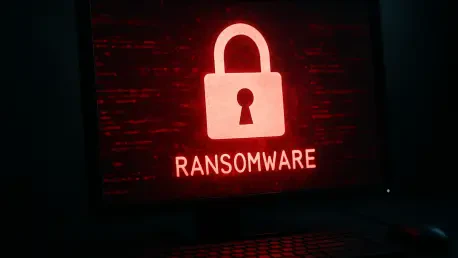In an era where digital infrastructure underpins nearly every facet of business operations, the surge in ransomware attacks has become a pressing concern for organizations worldwide. Imagine a scenario where a seemingly innocuous software tool, one trusted by IT teams for remote administration, becomes the very gateway for cybercriminals to infiltrate a network, encrypt critical data, and demand exorbitant ransoms. This is not a distant threat but a reality unfolding as ransomware gangs increasingly exploit legitimate remote access tools to gain stealthy, persistent access to enterprise systems. These sophisticated tactics allow attackers to blend into routine operations, evading traditional security measures and posing a formidable challenge to cybersecurity defenses. As the methods of these malicious actors evolve, understanding their strategies and the impact on victims is crucial for building resilient protections against such insidious threats.
Unveiling the Tactics of Modern Ransomware Operators
Stealthy Infiltration Through Trusted Software
Ransomware gangs have shifted their approach from broad, scattershot malware campaigns to highly targeted operations that leverage legitimate remote access tools for infiltration. Software like AnyDesk and Splashtop, widely used for remote IT support, are now being weaponized by groups such as LockBit and Black Basta to penetrate enterprise networks. Attackers often gain initial access through tactics like phishing or credential stuffing, then either hijack preinstalled tools by altering configurations or deploy them silently via command-line parameters. This method is particularly insidious because these tools are often signed and trusted by security systems, allowing malicious activities to bypass conventional antivirus and endpoint detection mechanisms. The ability to operate under the guise of routine IT processes makes it incredibly difficult for legacy systems to flag suspicious behavior, giving attackers a significant advantage in establishing a foothold within compromised environments.
Persistent Access via Sophisticated Backdoors
Once inside a network, ransomware operators employ remote access tools to ensure persistent control through a variety of cunning methods. By manipulating registry settings or creating hidden scheduled tasks, attackers establish multiple backdoors that allow them to return even if one entry point is discovered and closed. Another prevalent technique involves injecting malicious credentials into existing tools or running processes with elevated privileges using utilities like TrustedInstaller. These strategies leave minimal traces, often avoiding the creation of new files that might trigger alerts. The result is a prolonged dwell time within the network, during which attackers can move laterally, escalate privileges, and prepare for the final encryption stage. This persistent access not only complicates remediation efforts but also amplifies the potential damage, as attackers can continuously adapt their approach to evade detection by overworked security teams.
Impacts and Defenses Against Evolving Threats
Devastating Consequences for Targeted Organizations
The exploitation of remote access tools by ransomware gangs has led to catastrophic outcomes for affected organizations, with encrypted file shares and disabled backups becoming all too common. High-profile attacks have seen attackers combine these tools with file-shredding techniques to erase forensic evidence, making recovery efforts even more challenging. Beyond data encryption, altered credentials for remote access software often lock out legitimate administrators, leaving IT teams scrambling to regain control. The financial toll is staggering, as prolonged downtime and increased ransom demands drain resources and disrupt operations. These incidents underscore a critical vulnerability in the trust placed in everyday IT utilities, revealing how a tool designed for convenience can be turned into a weapon of destruction. The broader implications include eroded customer trust and potential regulatory penalties, further compounding the crisis for businesses already struggling to keep pace with digital threats.
Shifting to Behavior-Based Security Measures
Addressing the menace of ransomware attacks facilitated by remote access tools demands a fundamental shift in cybersecurity strategies toward behavior-based monitoring. Traditional signature-based detection falls short against attackers who exploit whitelisted executables and documented installer parameters that rarely raise red flags. Instead, organizations must prioritize detecting anomalous usage patterns, such as unusual command-line arguments or unexpected remote access sessions. Implementing strict application whitelisting and enforcing multi-factor authentication can significantly reduce the risk of unauthorized access. Additionally, continuous monitoring of network traffic for signs of lateral movement is essential to disrupt attackers before encryption occurs. By focusing on the behavior of tools rather than their inherent trustworthiness, security teams can better identify and mitigate threats. Looking back, the failure to adapt to these evolving tactics left many vulnerable, but adopting proactive, adaptive defenses offers a clearer path to resilience and recovery.









